This Is Why Hubble Can’t See The Very First Galaxies










This Is Why Hubble Can’t See The Very First Galaxies
“By observing dark, empty patches of sky, it reveals ancient galaxies without nearby interference. When distant galaxy clusters are present, these massive gravitational clumps behave as natural magnifying lenses. The most distant observed galaxies have their light bent, distorted, and amplified along the journey. Hubble discovered the current cosmic record-holder, GN-z11, via lensing. Its light arrives from 407 million years after the Big Bang: 3% of the Universe’s current age.”
No astronomical observatory has revolutionized our view of the Universe quite like NASA’s Hubble Space Telescope. With the various servicing missions and instrument upgrades that have taken place over its lifetime, Hubble has pushed back the cosmic frontier of the first stars and galaxies to limits never before known. Yet there must be galaxies before them; some of the most distant Hubble galaxies have stars in them that push back the time of the first galaxies to just 250 million years after the Big Bang. Yet Hubble is physically incapable of seeing that far. Three factors: cosmic redshift, warm temperatures, and light-blocking gas, prevent us from going much beyond what we’ve already seen. In fact, we’re remarkably lucky to have gotten as distant as we have.
Find out why Hubble can’t see the very first galaxies, and why we need the James Webb space telescope!
More Posts from Matthewjopdyke and Others
Pathway to the Stars: Part 10, Sky Taylor
"In a benevolent society, you are safe, I am safe, everyone is safe, and our potential for innovations that reduce unnecessary suffering can know no bounds. Only in a benevolent, ethical, and moral society—a society and a worldwide civilization that seeks to preserve life, and bolster well-being, will we possess the mentality and the evolved capacity to preserve our Earth, our Solar System, and our humanity...
“Those who justify the behaviors of those that truly oppress, they know who they are, yet I believe that they too can change. No matter who you are, no matter your past, no matter what you have done until now, you can still grow, you can breathe in, and you can breathe out. You can slow down the visceral thoughts of malice raging within your mind, and you can gain compassion for others, you can preach ideas of hope and of kindness, rather than push the agendas of greed, elitism, and dissension." ~ Eliza Williams
In this, the tenth book of the Pathway to the Stars series, continues her political leadership rising to new heights, and due to her efforts, a new superhero is borne. Meet Sky Taylor and her unique method of resolving some of the most significant conflicts affecting us all. To her, healing rather than harming is the best option toward creating a beautiful and promising future, as we prepare to journey to the distant stars!
LCCN: 2019919232 ISBN: 978-1-951321-11-6 eBook: https://smile.amazon.com/dp/B081XLBL1G Paperback: https://smile.amazon.com/dp/1951321111
#ScienceFiction #Scifi #SpaceOpera #Fantasy #Author #MatthewJOpdyke #Physics #Biology #Neuroscience #Biotechnology #AI #HBCI #HumanEvolution #PreservingEarth #SpaceExploration #SolarSystem #VirtualUniverse #Nanotech #Biotech #CRISPR #Longevity #Wellbeing #QualityofLife #ClarityofMind https://youtu.be/lGSSIaPM098 via YouTube
30 years after the detection of SN1987A neutrinos
On February 23, 1987, just before 30 years from today, the neutrinos emitted from the supernova explosion SN1987A in the Large Magellanic Cloud, approximately 160,000 light-years away, reached the earth. Kamiokande, the predecessor detector of Super-Kamiokande, detected the 11 emitted neutrinos. Worldwide, it was the first instance of the detection of the emitted neutrinos from the supernova burst, and it served a big step toward resolving the supernova explosion system. In 2002, Dr. Masatoshi Koshiba, a Special University Professor Emeriuts of the University of Tokyo, was awarded a Nobel Prize in Physics for this achievement.

Before the explosion of supernova SN1987A (right) and after the explosion (left) Anglo-Australian Observatory/David Malin
Kamiokande, the pioneer of neutrino research
Kamiokande detector was a cylindrical water tank (16 m in diameter and height) with 1000 of the world’s largest photomultiplier tubes inside it, and it was laid 1000 m underground in Kamioka-town, Yoshiki-gun, (currently Hida-city) Gifu Prefecture, Japan. (Currently the site of Kamiokande is used for KamLAND experiment.) Kamiokande was devised by Prof. Koshiba who started the observation in 1983. Originally, it was constructed for detecting the proton decay phenomenon, but it was modified for the solar neutirno observation. By the end of 1986, the detector modification was completed and the observation began.

Inside of Kamiokande detector

Overview of Kamiokande detector

Prof. Koshiba working in the tank

Prof. Kajita and Prof. Nakahata (then PhD students) tuning up the data aquision system in the mine
The day of detection of the supernova neutrinos
On February 25, 1987, two days after the observation of supernova SN1987A through naked eyes, a fax was sent from Pennsylvania University to the University of Tokyo to inform them about the supernova explosion. Soon after receiving the fax, Prof. Yoji Totsuka asked the researcher in Kamioka to send the magnetic tapes that recorded the Kamiokande data. (At that time, the information network was not developed, so the data was delivered physically).

The fax sent from Pennsylvania University to inform about the supernova explosion.
On February 27, when the magnetic tapes arrived at the laboratory in Tokyo, Prof. Masayuki Nakahata (currently the spokesperson of Super-Kamiokande experiment), who was then a PhD student immediately started the analysis. On the morning of February 28, while Prof. Nakahata printed out the analysis plot between the detection time and number of photo-sensors that detect the light, Ms. Keiko Hirata, a Master’s student found a peak, obviously different from the noise in the distribution. It was the exact trace to detect the neutrinos from SN1987A. (A two minutes blank period due to a regular system maintenance is recorded in the plot, at a few minutes before the explosion. If the explosion occurred during this period, Kamiokande could not have detected the SN1987A neutrinos.) After a detailed analysis, it was clear that Kamiokande detected 11 neutrinos for 13 seconds after 16:35:35 on February 23, 1987.

THe magnetic tape recorded SN1987A data

The printout of Kamiokande data and the envelope which stores the printout in. “Keep carefully Y.T.” written by Prof. Youji Totsuka.

The printout of the data. Horizontal axis shows time (from right to left and one line as 10 seconds) and the vertical axis shows the number of hit photo-sensors of each event (approximately proportional to the energy of the event). The obvious peak is the signal of neutrinos from SN1987A. The blank period due to the detector maintainance was recorded a few minutes before the signal.
When Prof. Nakahata finished the analysis and reported to Prof. Koshiba on the morning of March 2, Prof. Koshiba instructed him to investigate the entire data for the presence of similar signals. Under a gag rule, researchers analyzed the 43 days data of Kamiokande on March 2 to March 6, and obtained conclusive evidence that the occurrence of the peak was only from the signal of the supernova SN1987A; further, they published these findings as an article. Here are the the signatures of researchers who wrote the article.

The subsequent development of neutrino research
The Kamiokande’s detection of the supernova neutrinos became a trigger to recognize the importance of neutrino research, and the construction of Super-Kamiokande, whose volume is about 20 times larger than that of Kamiokande, was approved. Super-Kamiokande started observation from 1996 and discovered the neutrino oscillation in 1998. In 2015, Prof. Takaaki Kajita was awarded the Nobel Prize in Physics for this achievement. SN1987A made a worldwide breakthrough in neutrino research, including the K2K experiment, T2K experiment and KamLAND experiment.
If a supernova explosion in our galaxy occurs now, Super-Kamiokande will detect approximately 8,000 neutrinos, almost 1000 times greater than those detected 30 years ago. Further, it is expected that the detailed mechanism of supernova explosion will be revealed and we will understand the stars or our universe in depth. In our galaxy, the supernova explosion is expected to occur once in every 30-50 years. It may occur at this very moment. The neutrinos from the supernova will be detected in mere 10 seconds. Super-Kamiokande continues the observation and will not miss any explosion moment.
Source
Nine facts about neutrinos
Images: Kamioka Observatory,

#spaceopera #audiobooks #ElizaWilliams #cerebral #enlightenment #scifiauthor #sciencefictionnovels #politicalsciencefiction #longevity #CRISPR #physiology #neuroscience #physics #theoreticalphysics #biotechnology #nanotechnology #furtherthanbefore #pathwaytothestars #VeshaCeleste https://www.instagram.com/p/BzmtS0ehEz1/?igshid=c3t3o26feu38
I am pleased to announce a NEW RELEASE to my Space Opera series. It is now available on Amazon in ebook and paperback formats! Pathway to the Stars: Part 4, Universal Party Autographed copies of printed material are available for direct purchase on the author website at https://www.ftb-pathway-publications.com Thank you, Kim, for putting this together! #spaceopera #futurism #scifiauthor #sciencefiction #scififantasy #biotech #nanotech #neurotech #spacetravel #solarsystem #politicalscifi #strongfemalelead #entertain #educate https://www.instagram.com/p/Bur_fTyA4xP/?utm_source=ig_tumblr_share&igshid=15y5ce5xhxpf5
Easter, Spring, and April Sale!
Please support the artist; comments on Amazon, Goodreads, and Barnes & Noble are also welcome and helpful. Thank you… 🐇🐰🐣🐤🐰🐇 – – Sale throughout April on: Pathway to the Stars: Part 1, Vesha Celeste (first in booklet series) http://www.amazon.com/dp/B07J2S8LLV – –and– – Further than Before: Pathway to the Stars: Part 1 (first in novel series) http://www.amazon.com/dp/B07HL767WZ – – Quotes from series, read by…
View On WordPress

Four videos here. 1. Vesha's story (chill version) 2 & 3. Eliza's story (chill and the other rockin) 4. James' story (chill) Let me know what you think. There is a lot of behind the scenes artwork. Enjoy =) #scifiauthor #spaceopera #ebooks paperbacks #fantasy #astronomy #sciencefiction #pathwaytothestars #politicalsciencefiction #longevity #CRISPR #physiology #architect #neuroscience #physics #theoreticalphysics #biotechnology #nanotechnology #matthewjopdyke #philosophy #wellbeing #spacetravel #solarsystem #books https://www.instagram.com/p/B0c9BK0BAeZ/?igshid=1plgw1wv7lxj0

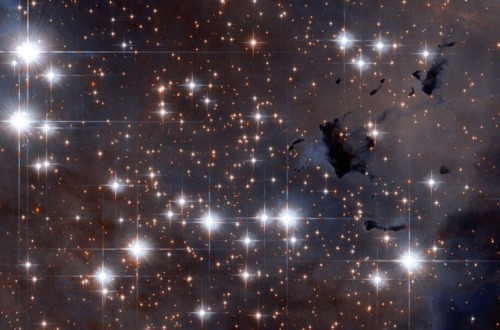

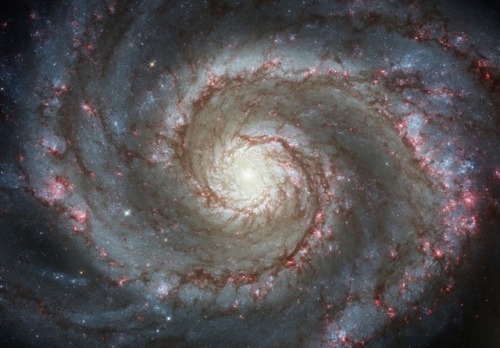



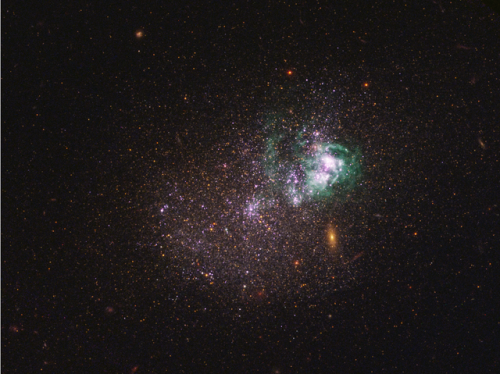
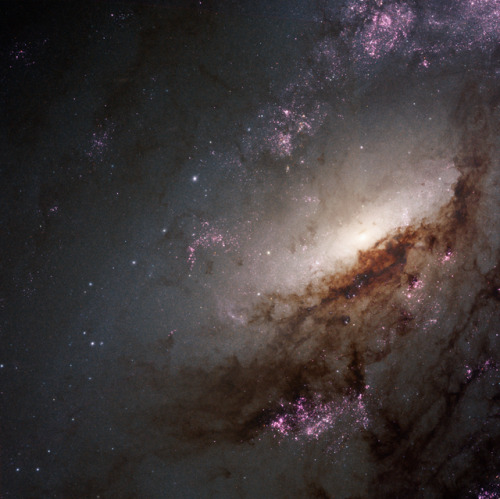
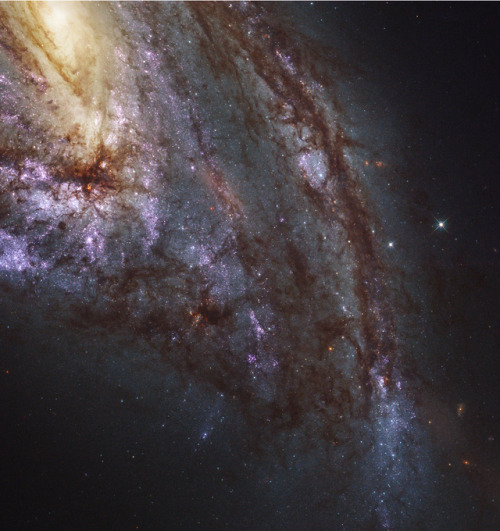
Hubble Catches New Stars, Individually, Forming In Galaxies Beyond The Milky Way
“There are a massive variety of star-forming regions nearby, and Hubble’s new Legacy ExtraGalactic UV Survey (LEGUS) is now the sharpest, most comprehensive one ever. By imaging 50 nearby, star-forming spiral and dwarf galaxies, astronomers can see how the galactic environment affects star-formation.”
Within galaxies, new stars are going to be formed from the existing population of gas. But how that gas collapses and forms stars, as well as the types, numbers, and locations of the stars that will arise, is highly dependent on the galactic environment into which they are born. Dwarf galaxies, for example, tend to form stars when a nearby gravitational interaction triggers them. These bursts occur periodically, leading to multiple populations of stars of different ages. Spirals, on the other hand, form their new stars mostly along the lines traced by their arms, where the dust and gas is densest. Thanks to the Hubble Space Telescope, we’re capable of finding these stars and resolving them individually, using a combination of optical and ultraviolet data.
The best part? These are individually resolved stars from well outside our own galaxy: in 50 independent ones. Here’s what Hubble’s new LEGUS survey is revealing.
For all interested (in the US), October 11th, 2019 is the last full day with an opportunity to win the free hardcover book: A Cosmic Legacy: From Earth to the Stars Contemporary Science Fiction Author Matthew J. Opdyke is giving away two of his one-year-anniversary novels. This includes all his previously published content in the continuing saga, via his compilation (a $45 value). Race to win, or simply buy it, and make this grand literary opus the favorite item in your library, next to your reading corner, on your nightstand, or in your living room, as you settle and read while the days go by. Enjoy the story of several heroes who do as much as they can to heal the Earth, provide healing to those suffering most, and help humanity get out and into the Cosmos! LCCN: 2019911854 ISBN: 978-1-7333131-2-4
To head straight to Amazon for a free chance to win, follow this link: https://www.amazon.com/ga/p/1891f3f0b29c9788
To see the author's latest video, follow this URL: https://youtu.be/NLrOeExSTBE
For the Author's Google Business Promo, follow this URL:https://bit.ly/2IGRNhi
LCCN: 2019911854 ISBN: 978-1-7333131-2-4
Music by and courtesy of Dreamstate Logic: http://dreamstatelogic.com/updates.html https://www.youtube.com/dreamstatelogic #SpaceOpera #ScienceFiction #SciFi #ContemporarySciFi #Fantasy #Sophisticated #Books #eBooks #MatthewJOpdyke #mjopublications #physics #astronomy #biotech #neurotech #nanotech #spaceexploration #wellbeing #EarthFirst #physiology #neurology #longevity #CRISPR #sociopoliticalscifi #forEveryone










Ask Ethan: When Were Dark Matter And Dark Energy Created?
“Today [normal matter] is only 4.9% while Dark Matter and Dark Energy takes the rest. Where did they come from?”
The Universe, as we know it, got its start in earnest when the hot Big Bang began. Space was filled with all the particles and antiparticles of the Standard Model, up at tremendous energies, while the Universe then expanded, cooled, and gave rise to all we know. But when did dark matter and dark energy, which make up 95% of the Universe we know today, come into the picture? Was the Universe born with these components of energy? Or were they created at a later time? We have some inklings that dark matter was likely created in the extremely early stages, but may not have been present from the Universe’s birth. On the other hand, all theoretical signs point to dark energy always existing, but observationally, we have about 4 billion years where we cannot measure its presence at all.
Where do dark matter and dark energy come from? It’s a great cosmic mystery, but we do know something about it. Find out where we are today!
I was curious about a closeup of Saturn's rings... nice!





52 of Cassini’s most beautiful postcards from the outer solar system
The spacecraft completely changed our view of Saturn and her moons
One of NASA’s greatest spacecraft will call it quits on September 15, 2017. The Cassini spacecraft has made countless discoveries during its sojourn to Saturn and its surrounding moons. It has also sent back nearly 400,000 images, many of which are purely spectacular, with surely more to come during the final months of the mission as Cassini explores new territory between Saturn and its rings.
In honor of the brave spacecraft, we spent hours sifting through the deluge of images to highlight some of Cassini’s best views from Saturn.
See all 52 ~ Popular Science
Image credits: NASA
-
 panspanther liked this · 5 years ago
panspanther liked this · 5 years ago -
 dimens1ons reblogged this · 5 years ago
dimens1ons reblogged this · 5 years ago -
 dimens1ons liked this · 5 years ago
dimens1ons liked this · 5 years ago -
 worldart1 liked this · 6 years ago
worldart1 liked this · 6 years ago -
 meaw2032 liked this · 6 years ago
meaw2032 liked this · 6 years ago -
 adayinthelifeofjade-blog liked this · 6 years ago
adayinthelifeofjade-blog liked this · 6 years ago -
 hedownwithskeletor liked this · 6 years ago
hedownwithskeletor liked this · 6 years ago -
 the-keeper-of-the-gaze liked this · 6 years ago
the-keeper-of-the-gaze liked this · 6 years ago -
 nihilismosblog liked this · 6 years ago
nihilismosblog liked this · 6 years ago -
 top-notch123 reblogged this · 6 years ago
top-notch123 reblogged this · 6 years ago -
 lensel liked this · 6 years ago
lensel liked this · 6 years ago -
 birdflu2k11 liked this · 6 years ago
birdflu2k11 liked this · 6 years ago -
 samsungluna-blog reblogged this · 6 years ago
samsungluna-blog reblogged this · 6 years ago -
 laflordeluna liked this · 6 years ago
laflordeluna liked this · 6 years ago -
 intervallag liked this · 6 years ago
intervallag liked this · 6 years ago -
 gore-parlor liked this · 6 years ago
gore-parlor liked this · 6 years ago -
 matthewjopdyke reblogged this · 6 years ago
matthewjopdyke reblogged this · 6 years ago -
 matthewjopdyke liked this · 6 years ago
matthewjopdyke liked this · 6 years ago -
 mage1101 reblogged this · 6 years ago
mage1101 reblogged this · 6 years ago -
 mage1101 liked this · 6 years ago
mage1101 liked this · 6 years ago -
 asliceofshay liked this · 6 years ago
asliceofshay liked this · 6 years ago -
 impsblmchns liked this · 6 years ago
impsblmchns liked this · 6 years ago -
 jimmyjimmy96 liked this · 6 years ago
jimmyjimmy96 liked this · 6 years ago -
 pampaluna liked this · 6 years ago
pampaluna liked this · 6 years ago -
 sugarfishseattle liked this · 6 years ago
sugarfishseattle liked this · 6 years ago -
 hashcanaca-blog liked this · 6 years ago
hashcanaca-blog liked this · 6 years ago -
 captainjack149 liked this · 6 years ago
captainjack149 liked this · 6 years ago -
 somescreamsinajar liked this · 6 years ago
somescreamsinajar liked this · 6 years ago -
 strangedraws liked this · 6 years ago
strangedraws liked this · 6 years ago -
 sanjerodo liked this · 6 years ago
sanjerodo liked this · 6 years ago -
 chbnb liked this · 6 years ago
chbnb liked this · 6 years ago -
 whiskeyandherlove liked this · 6 years ago
whiskeyandherlove liked this · 6 years ago -
 thebitterend22 liked this · 6 years ago
thebitterend22 liked this · 6 years ago -
 summerwhiteee liked this · 6 years ago
summerwhiteee liked this · 6 years ago -
 wutheredman reblogged this · 6 years ago
wutheredman reblogged this · 6 years ago
